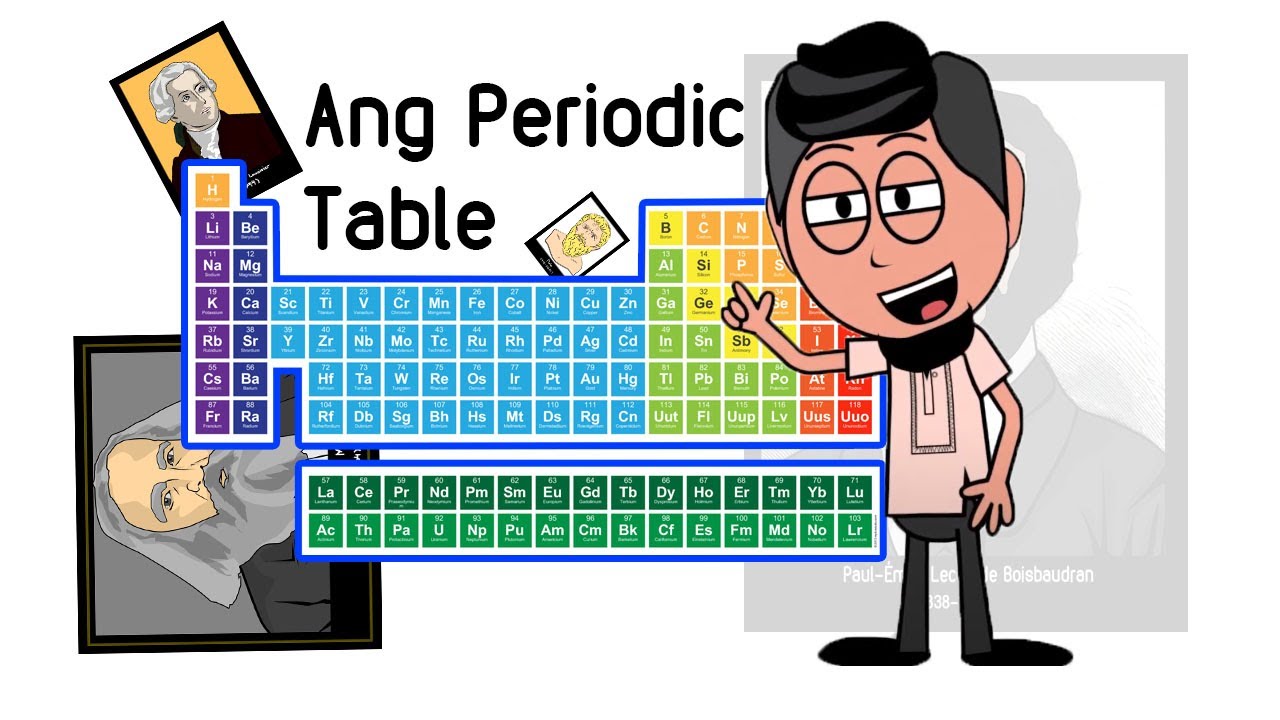Aula 23 - História da Tabela Periódica - Help Química
Summary
TLDRThe video explores the fascinating history of the Periodic Table, detailing its evolution from early concepts of elements by ancient Greeks to the groundbreaking work of Dmitri Mendeleev. It traces the efforts of various scientists, including John Newlands, Johann Döbereiner, and Henry Moseley, who contributed to the classification of elements. The narrative also highlights the discovery of synthetic elements and their impact on modern chemistry. Through periodicity, scientists have been able to understand and categorize the elements in a way that has enabled significant advancements in fields like biochemistry and industry.
Takeaways
- 😀 The classification of chemical elements was one of chemistry's greatest achievements, allowing knowledge to be represented clearly and concisely.
- 😀 Ancient Greeks believed in four fundamental elements—earth, fire, air, and water—but modern chemistry discovered there are many more elements.
- 😀 The first chemical element, phosphorus, was discovered in 1669 by alchemist Henning Brand, who isolated it from urine while searching for the Philosopher's Stone.
- 😀 Early attempts to classify elements included dividing them into metals and non-metals, but this was too simplistic given the variety of their properties.
- 😀 Johann Wolfgang Döbereiner introduced the 'law of triads,' grouping elements based on similar properties and atomic mass averages, though it did not apply to all elements.
- 😀 In 1860, a conference organized by German chemists discussed the differences between atoms and molecules, with Dmitri Mendeleev in attendance, who would later develop the Periodic Table.
- 😀 Early models of the periodicity of elements included Chancourtois’s screw-like arrangement and Newlands' 'law of octaves,' which was ridiculed but later recognized as significant.
- 😀 Dmitri Mendeleev created the first version of the Periodic Table in 1869, arranging elements by atomic mass and predicting the existence of yet-to-be-discovered elements.
- 😀 The discovery of atomic numbers by Henry Moseley in 1913, using X-ray techniques, resolved issues in Mendeleev's table by ordering elements by their atomic number rather than atomic mass.
- 😀 The modern Periodic Table has evolved, including synthetic elements created in laboratories, with the addition of transuranic elements beyond uranium (atomic number 92).
Q & A
What was the initial classification of elements before the development of the periodic table?
-Before the periodic table, elements were initially classified as either metallic or non-metallic. However, this classification was insufficient given the many distinct properties elements possess.
What was Johann Wolfgang Döbereiner's contribution to the classification of elements?
-Döbereiner proposed the 'Law of Triads,' where elements were grouped into sets of three based on similar properties. The atomic weight of the central element in each triad was the average of the other two, though only a few elements fit this rule.
How did the periodicity concept emerge in chemistry?
-The idea of periodicity—the recurrence of similar properties among elements—emerged when various chemists, such as August Kekulé and John Newlands, proposed ways to organize elements based on their atomic mass or similar characteristics.
What was John Newlands' 'Law of Octaves'?
-John Newlands suggested that elements could be arranged in groups of eight, with each eighth element having properties similar to the first. He drew an analogy to the musical scale, though his theory was initially ridiculed by his peers.
What key discovery did Dmitri Mendeleev make in organizing the elements?
-Dmitri Mendeleev arranged the known elements by atomic mass and noticed that their properties repeated periodically. He left gaps in his table, predicting the discovery of new elements, which was later confirmed when elements like gallium and germanium were found.
What was Henry Moseley's contribution to the periodic table?
-Henry Moseley refined Mendeleev's periodic table by determining that the elements should be arranged by atomic number rather than atomic mass. This corrected inconsistencies in Mendeleev's table and led to the modern periodic table we use today.
What role did the discovery of synthetic elements play in the development of the periodic table?
-The discovery of synthetic elements, particularly transuranic elements (those with atomic numbers greater than 92), expanded the periodic table and led to its modern form. Chemists like Glenn T. Seaborg played a major role in organizing these elements and integrating them into the table.
What are transuranic elements, and why are they important in the context of the periodic table?
-Transuranic elements are those with atomic numbers greater than 92, which are not found in nature but are created artificially. Their inclusion in the periodic table, thanks to discoveries by scientists like Seaborg, provided a fuller understanding of element organization and behavior.
How did the development of the periodic table contribute to other scientific advancements?
-The periodic table's organization allowed chemists to predict the properties of elements, which led to advancements in fields such as bioengineering, medicine, and industrial chemistry. It also helped scientists understand how different elements interact, leading to the synthesis of new materials and compounds.
What does the periodic table reveal about the relationships between elements?
-The periodic table reveals that elements with similar chemical properties are grouped together in columns (families), while their atomic properties, such as ionization energy and atomic radius, follow predictable trends across rows (periods). This periodicity helps predict behavior and reactivity.
Outlines

This section is available to paid users only. Please upgrade to access this part.
Upgrade NowMindmap

This section is available to paid users only. Please upgrade to access this part.
Upgrade NowKeywords

This section is available to paid users only. Please upgrade to access this part.
Upgrade NowHighlights

This section is available to paid users only. Please upgrade to access this part.
Upgrade NowTranscripts

This section is available to paid users only. Please upgrade to access this part.
Upgrade NowBrowse More Related Video
5.0 / 5 (0 votes)





